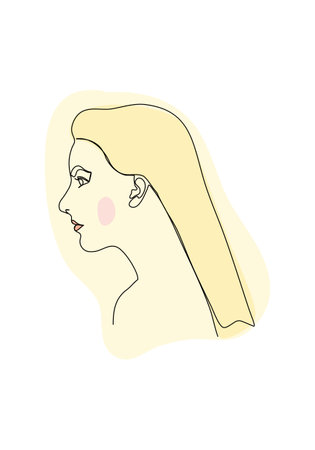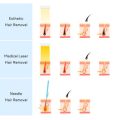1. Introduction to Exfoliation
When it comes to skincare, exfoliation is often the secret step that takes your routine to the next level. But what exactly is exfoliation, and why does it matter so much in today’s world of serums, moisturizers, and face masks? Let’s break it down in a simple way.
What Is Exfoliation?
Exfoliation is the process of removing dead skin cells from the surface of your skin. Our skin naturally sheds these cells, but sometimes they don’t slough off as quickly as we’d like. This can leave our complexion looking dull, rough, or uneven. By using exfoliators—products specifically designed for this task—we help speed up this process and reveal fresher, smoother skin underneath.
Why Exfoliation Matters in Modern Skincare
In American skincare routines, where “glow” and “healthy skin” are major goals, exfoliation has become an essential step. Here’s why:
| Benefit | How It Helps |
|---|---|
| Smoother Texture | Removes rough patches and makes skin feel softer |
| Brighter Appearance | Lifts away dullness for a more radiant look |
| Better Absorption | Allows serums and moisturizers to sink in deeper |
| Clearer Skin | Helps prevent clogged pores and breakouts |
The Everyday Reality
Between makeup, sunscreen, and living busy lives (hello sweat, city grime, and stress!), our skin faces a lot every day. Exfoliating helps us hit reset—giving us a clean slate so everything else in our skincare lineup works better. No wonder it’s such a buzzword at beauty stores across the U.S.!
2. Types of Exfoliators: Physical vs. Chemical
When it comes to adding exfoliation into your daily skincare routine, understanding the two main types—physical and chemical exfoliators—can help you choose what’s best for your skin. Both types work to remove dead skin cells, but they do it in different ways. Let’s break down what makes each type unique, with some real-life examples you might find at your local drugstore or favorite beauty shop.
Physical Exfoliators
Physical exfoliators (sometimes called manual exfoliants) use small particles or textured tools to physically scrub away dead skin cells from the surface of your skin. Think of products that feel gritty or tools like brushes and sponges.
Popular Examples:
- Face scrubs with sugar, salt, or microbeads
- Cleansing brushes
- Konjac sponges
- Washcloths
These are great if you love that fresh, squeaky-clean feeling, but it’s important not to overdo it—scrubbing too hard can irritate your skin, especially if you have sensitive or acne-prone skin.
Chemical Exfoliators
Chemical exfoliators use gentle acids or enzymes to dissolve and loosen dead skin cells so they can be easily washed away. This method is often less abrasive than physical scrubs and works deeper in the pores.
Popular Examples:
- Alpha hydroxy acids (AHAs), like glycolic acid or lactic acid
- Beta hydroxy acids (BHAs), like salicylic acid
- Enzyme exfoliants from fruits like papaya or pineapple
Chemical exfoliants are popular because they can be more even and controlled—plus, many formulas target specific skin concerns like dullness, fine lines, or breakouts.
Main Differences at a Glance
| Physical Exfoliators | Chemical Exfoliators | |
|---|---|---|
| How They Work | Scrub away dead skin with texture or tools | Dissolve dead skin using acids/enzymes |
| Sensation | Gritty, scrubby feeling on the skin | Smooth application, sometimes a tingle |
| Best For | Normal to oily skin, those who love instant results | Sensitive, dry, acne-prone skin; targeted concerns |
| Examples | Sugar scrubs, cleansing brushes | AHA/BHA toners, enzyme masks |
| How Often? | 1-2 times per week (depends on sensitivity) | 1-3 times per week; some gentle formulas daily |
Your Skin, Your Choice!
No matter which route you go—physical or chemical—the key is listening to your skin. Everyone’s needs are different, so don’t be afraid to experiment until you find what makes your face feel its happiest and healthiest. Remember: gentle and consistent is always better than rough and rushed!

3. Benefits of Regular Exfoliation
Why Exfoliating Matters for Your Skin
Exfoliating isn’t just an extra step for skincare fans—it’s a game-changer for anyone looking to keep their skin healthy and glowing. When you exfoliate regularly, you’re helping your skin get rid of dead cells that pile up on the surface. This simple step can make a world of difference in how your skin looks and feels.
How Exfoliation Improves Skin Texture
If your skin ever feels rough or looks dull, exfoliating can help smooth things out. By removing dead skin, you reveal the fresher, softer layer underneath. Over time, this means fewer dry patches and less flakiness. Your face will feel smoother to the touch—and makeup goes on way easier too!
Texture Transformation at a Glance
| Before Regular Exfoliation | After Regular Exfoliation |
|---|---|
| Dull, uneven texture | Smoother, brighter skin |
| Clogged pores & rough spots | Softer, more even surface |
| Dry flakes & buildup | Fresh, glowing appearance |
The Power of Even Skin Tone
Uneven skin tone—think dark spots, redness, or leftover marks from breakouts—is super common. Regular exfoliation helps fade these spots by encouraging new cell growth. Over time, you’ll notice your complexion looking more balanced and even. It’s one of the easiest ways to boost your confidence with or without makeup.
Supporting Overall Skin Health
Exfoliating also helps your other skincare products work better. When there aren’t layers of dead skin blocking the way, serums and moisturizers can actually sink in and do their job. Plus, keeping your pores clear may help prevent breakouts and blackheads from forming in the first place. For folks who love being outside or wearing sunscreen daily (which is always a good idea!), regular exfoliation can help counteract some of the build-up that happens naturally.
4. How to Incorporate Exfoliators into Your Skincare Regimen
Finding the Right Balance for Your Skin
Exfoliating is a game-changer, but knowing how to work it into your skincare routine makes all the difference. Overdoing it can cause irritation, while not exfoliating enough means you might miss out on that fresh-faced glow. The key? Balance and consistency. Let’s break down how to blend exfoliation seamlessly with your other skincare steps, keeping in mind the needs of different skin types.
Tips for Using Exfoliators Effectively
- Start Slow: If you’re new to exfoliating, begin with once a week and see how your skin reacts.
- Choose Wisely: Pick an exfoliator (chemical or physical) that matches your skin’s needs—gentle formulas for sensitive skin, stronger ones for oilier types.
- Follow Up with Moisture: Always use a hydrating moisturizer after exfoliating to soothe and protect your skin barrier.
- Avoid Mixing Actives: Don’t combine strong exfoliants with other potent ingredients like retinol or vitamin C on the same day to prevent irritation.
Building Your Routine: Sample Schedules for Different Skin Types
| Skin Type | Exfoliation Frequency | Recommended Exfoliator Type | Other Skincare Steps |
|---|---|---|---|
| Sensitive | 1x/week | Mild chemical (e.g., lactic acid) | Gentle cleanser → Exfoliator → Hydrating serum → Calming moisturizer |
| Oily/Acne-Prone | 2-3x/week | BHA (salicylic acid) or gentle scrub | Foaming cleanser → Exfoliator → Oil-free serum → Lightweight moisturizer |
| Dry | 1-2x/week | Creamy enzyme exfoliant or mild AHA | Cream cleanser → Exfoliator → Nourishing serum → Rich moisturizer |
| Combination/Normal | 1-2x/week | AHA/BHA blend or gentle scrub | Cleansing gel → Exfoliator → Balancing toner → Regular moisturizer |
The Order Matters!
For best results, use your exfoliator after cleansing and before applying serums and moisturizers. This allows active ingredients to penetrate better and keeps your skin barrier happy.
Pro Tip: Listen to Your Skin!
If you notice redness, stinging, or tightness, take a break from exfoliation and focus on hydration. Everyone’s skin is unique—sometimes less really is more!
5. Common Mistakes and How to Avoid Them
Over-Exfoliation: When Too Much Is Not Better
It’s easy to think that more exfoliating means better results, but that’s definitely not the case. Over-exfoliation can strip away your skin’s natural barrier, leading to redness, sensitivity, and breakouts. Most experts recommend exfoliating 1-3 times a week depending on your skin type and the product you use. If your skin feels tight, burns, or looks extra shiny, it might be time to scale back.
Ingredient Interactions: Don’t Mix Just Anything
Some skincare ingredients just don’t play well together, especially when it comes to exfoliators. Using multiple strong actives at once can irritate your skin or make it more sensitive to sunlight. Here’s a quick guide to help you avoid common mix-ups:
| Ingredient | Should You Mix? | Notes |
|---|---|---|
| Retinol + AHAs/BHAs | No | Can cause peeling and irritation; use on alternate nights |
| Vitamin C + Exfoliants | Be Careful | Might increase sensitivity; try using Vitamin C in the morning and exfoliants at night |
| Physical + Chemical Exfoliants | No | Too harsh for most skin types; stick with one method per routine |
| Niacinamide + Exfoliants | Yes (Usually) | Generally safe, but patch test if you have sensitive skin |
Listening to Your Skin: Your Best Guide
Your skin will tell you what it needs—if you pay attention. If you notice stinging, burning, or flaky patches after exfoliating, that’s a sign to give your skin a break. Everyone’s tolerance is different, so don’t feel pressured by trends or routines that work for someone else. A good rule? Less is often more.
Quick Tips for Happier Skin:
- If your face feels raw or looks red after exfoliating, wait several days before trying again.
- Always follow up with moisturizer and SPF—even if you’re inside most of the day.
- If you’re unsure about product combinations, consult with a dermatologist or trusted skincare professional.
- Patching testing new products can save your skin from a lot of drama.
6. Choosing the Right Exfoliator for Your Skin Type
When it comes to exfoliating, one size definitely does not fit all. Everyone’s skin is unique, and your choice of exfoliator should celebrate that individuality! Whether you’re oily, dry, sensitive, or somewhere in between, finding the right product is key to a happy, healthy glow. Let’s break down how to choose an exfoliator that suits your skin type and lets your personality shine.
Why Skin Type Matters
Exfoliators come in many forms—scrubs, peels, pads, powders, and more. Picking the right one depends on understanding your skin’s needs. Some folks need a gentle touch; others can handle a little more intensity. Here’s a quick guide to help you find your perfect match:
Exfoliator Options by Skin Type
| Skin Type | Recommended Exfoliator | Frequency | Tips for Inclusivity & Expression |
|---|---|---|---|
| Sensitive | Gentle enzyme exfoliators or mild AHAs (like lactic acid) | Once per week | Look for fragrance-free and hypoallergenic options; patch test first! |
| Oily/Acne-Prone | BHA (salicylic acid) or clay-based scrubs (with smooth beads) | 2-3 times per week | Select non-comedogenic formulas; express yourself with fun textures or scents that suit your vibe! |
| Dry | Creamy exfoliators with hydrating ingredients (like jojoba beads or PHAs) | 1-2 times per week | Seek out products with nourishing oils; embrace rituals that make you feel pampered. |
| Combination | A blend of AHA/BHA pads or multi-masking approach | 1-3 times per week depending on area | Customize for different zones; you do you! |
| Mature | Mild chemical exfoliants (like mandelic acid), or enzyme masks | Once per week | Choose formulas with antioxidants; let your routine reflect your self-care priorities. |
A Note on Inclusivity & Self-Expression
Your skincare regimen is personal—a reflection of who you are and what makes you feel confident. Brands now offer more choices than ever for every skin tone, age, gender identity, and lifestyle. Look for products that align with your values, whether it’s cruelty-free, vegan, fragrance-free, or designed for melanin-rich skin. The most important thing? Listen to your skin and honor what feels right for you.
7. Conclusion: The Lasting Impact of Proper Exfoliation
When it comes to building a skincare routine that really works, exfoliation is a game-changer. It’s more than just an extra step—it’s what helps you get the most out of your cleansers, moisturizers, and serums. When you exfoliate regularly and correctly, you’re giving your skin a chance to shine—literally.
Why Exfoliation Matters in Your Routine
Exfoliators help sweep away dead skin cells that can clog pores and make your skin look dull. By clearing the way, they allow other products to work better and help you achieve that healthy glow everyone loves.
Key Benefits of Proper Exfoliation
| Benefit | How It Helps Your Skin |
|---|---|
| Smoother Texture | Removes rough patches and creates a softer feel |
| Brighter Complexion | Lifts away dullness for a radiant look |
| Clearer Pores | Reduces chances of breakouts and blackheads |
| Better Product Absorption | Makes serums and moisturizers more effective |
| Even Skin Tone | Helps fade dark spots over time for a more balanced appearance |
Making Exfoliation Work for You
The key is to choose the right type of exfoliator—whether that’s a gentle scrub or a chemical exfoliant—and use it as often as your skin needs (usually one to three times per week). Listen to your skin! If it feels irritated, take it down a notch. Consistency beats intensity every time.
Your Path to Healthy, Radiant Skin Starts Here
If you want your skin to look its best, don’t skip exfoliation. Adding this step to your skincare regimen can be simple, but the results are seriously rewarding. Give your skin the care it deserves—you’ll see and feel the difference with every glow-up!


